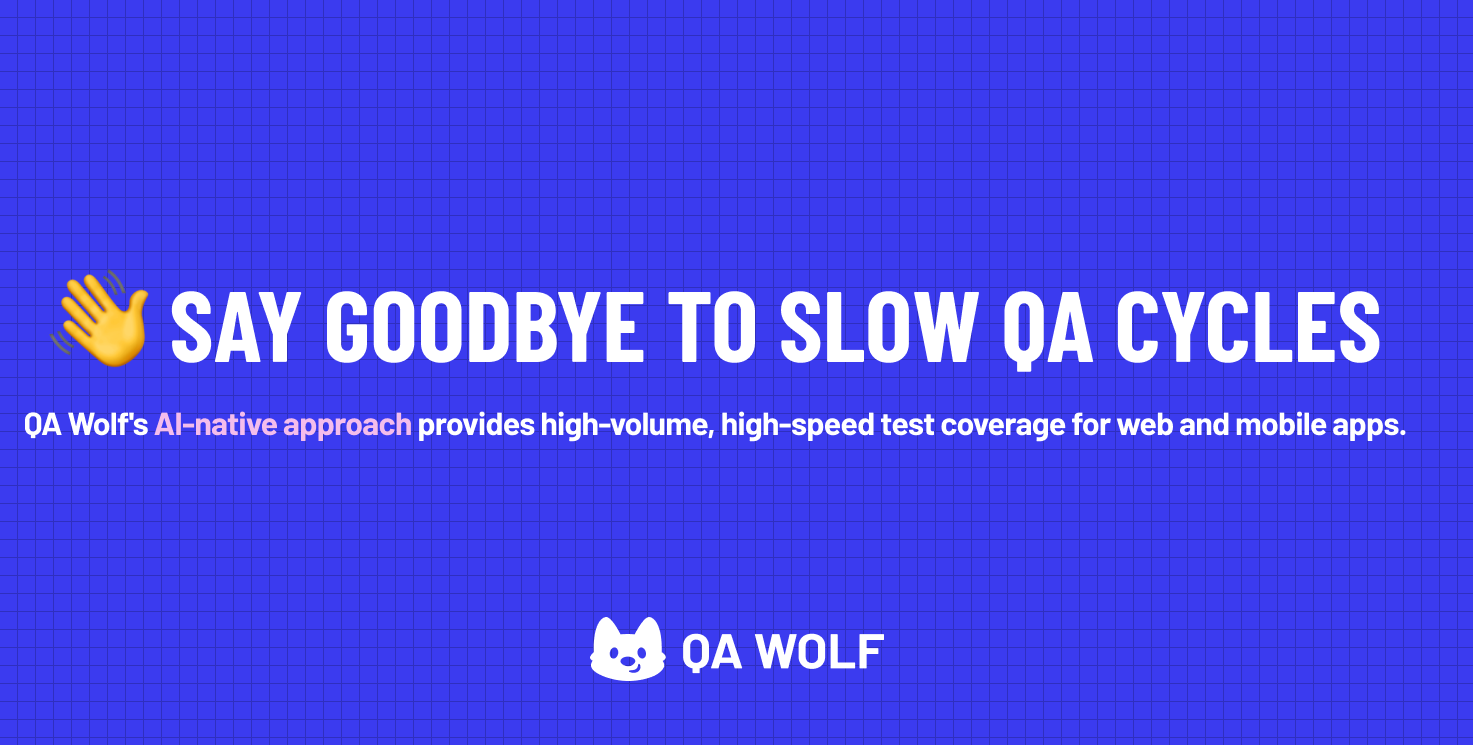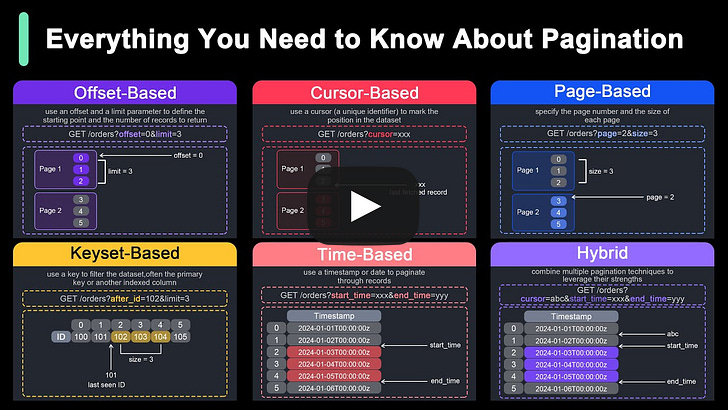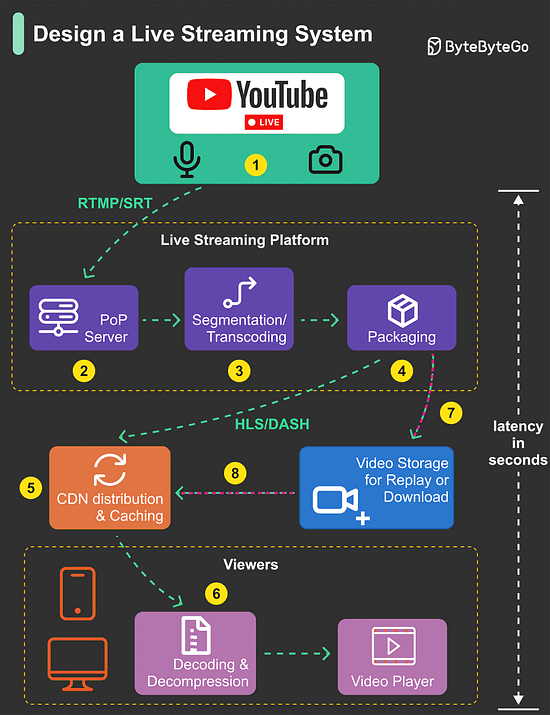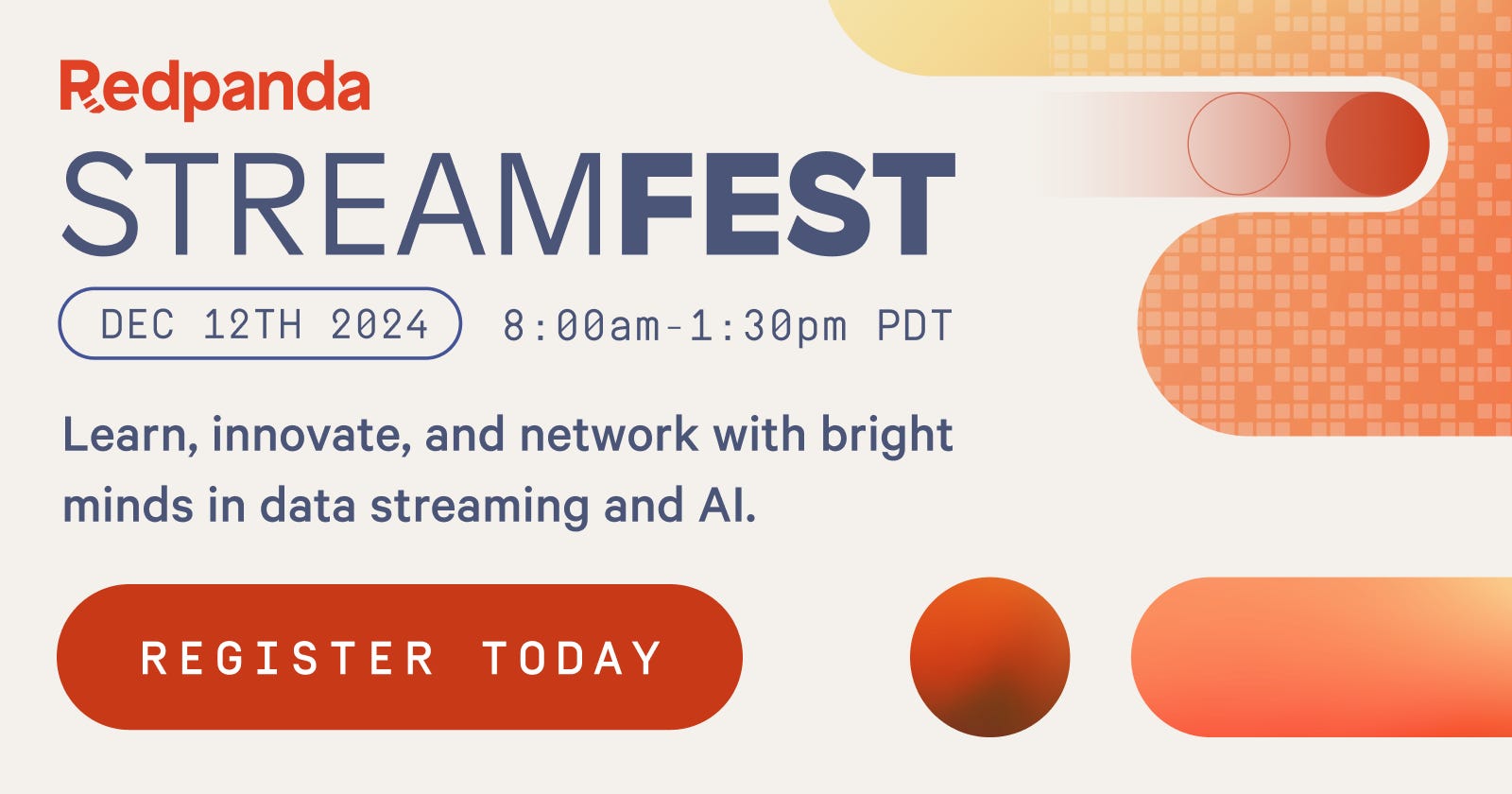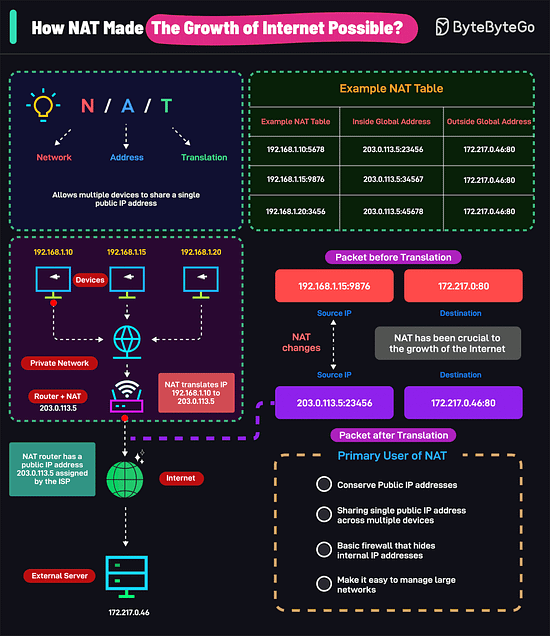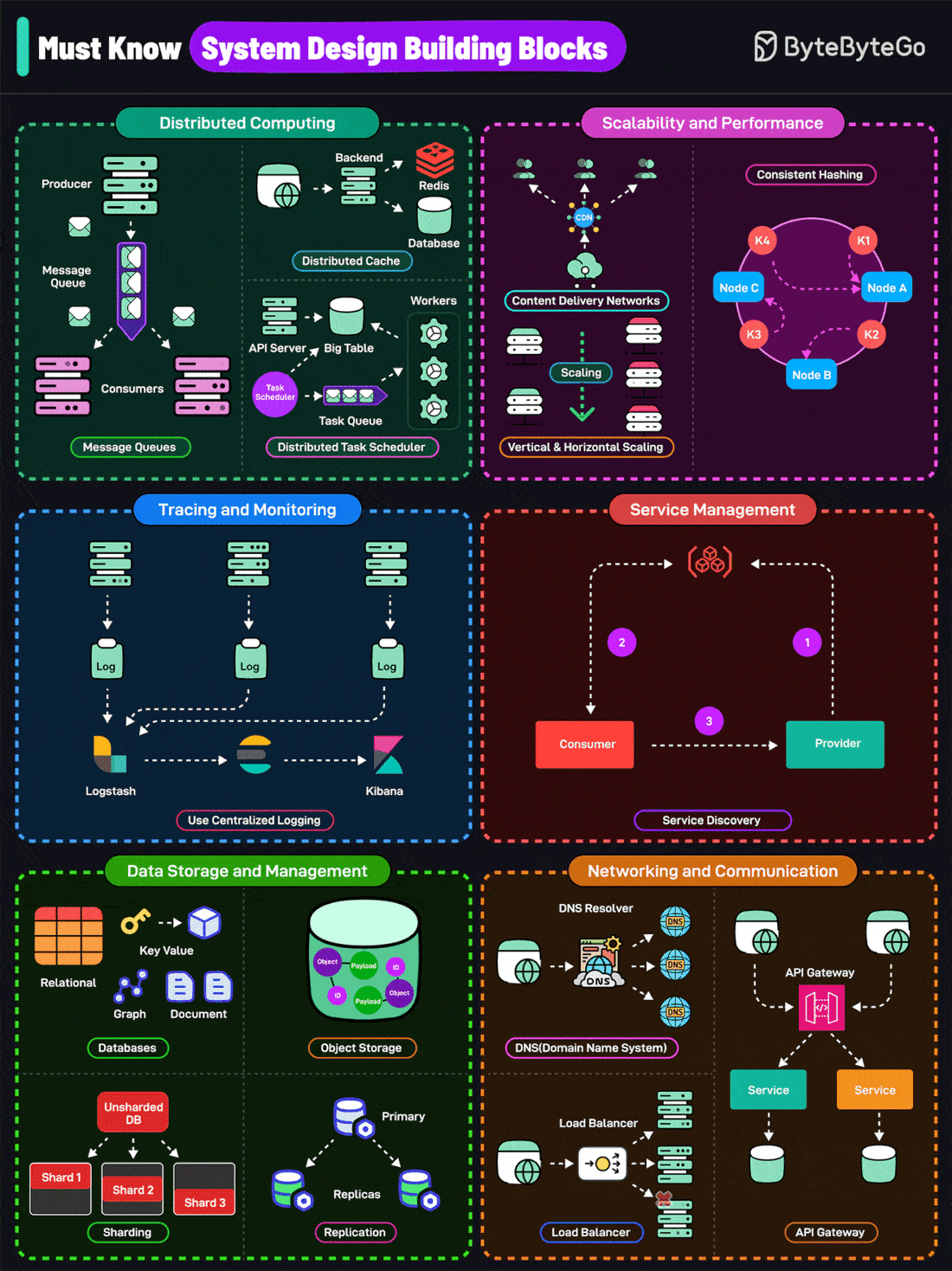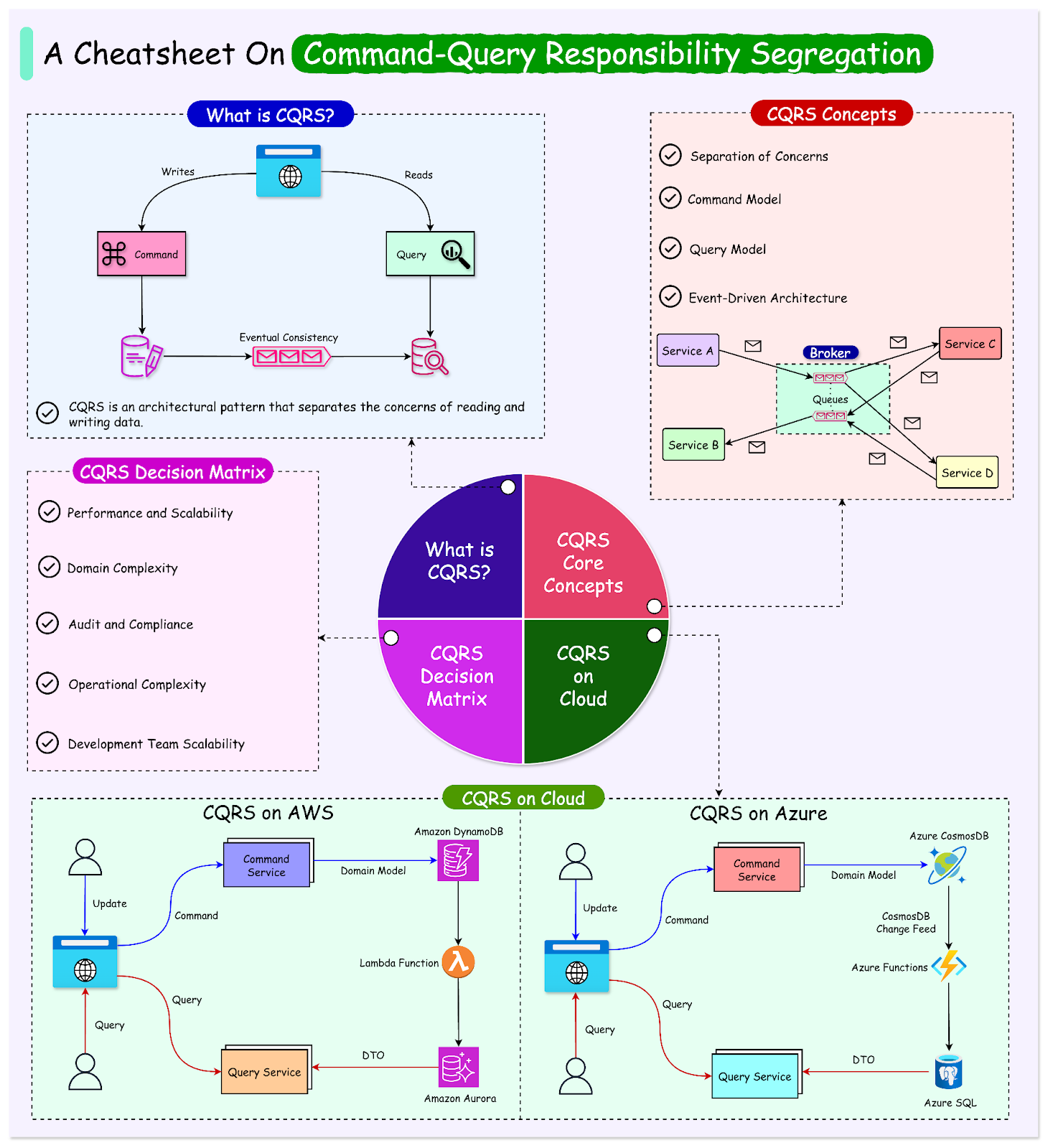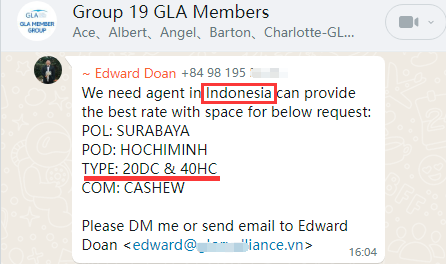Archives
- By thread 5362
-
By date
- June 2021 10
- July 2021 6
- August 2021 20
- September 2021 21
- October 2021 48
- November 2021 40
- December 2021 23
- January 2022 46
- February 2022 80
- March 2022 109
- April 2022 100
- May 2022 97
- June 2022 105
- July 2022 82
- August 2022 95
- September 2022 103
- October 2022 117
- November 2022 115
- December 2022 102
- January 2023 88
- February 2023 90
- March 2023 116
- April 2023 97
- May 2023 159
- June 2023 145
- July 2023 120
- August 2023 90
- September 2023 102
- October 2023 106
- November 2023 100
- December 2023 74
- January 2024 75
- February 2024 75
- March 2024 78
- April 2024 74
- May 2024 108
- June 2024 98
- July 2024 116
- August 2024 134
- September 2024 130
- October 2024 141
- November 2024 171
- December 2024 115
- January 2025 216
- February 2025 140
- March 2025 220
- April 2025 233
- May 2025 239
- June 2025 303
- July 2025 175
-
October Updated SOA 210827答复 Statement 220826
Greetings
Tried calling your colleague, but his number is not going through. As our MD Mr patrick is late i am the acting for now.
Attached updated October SOA till now, total USD 26162.21,
pls kindly check and advise your payment schedule for that, thanks!
OUR REF
H B/L NO.
M B/L NO.
ETD
ETA
AMOUNT ($)
20'
40'
HC
POL
POD
DN NO.
OFB210604126
PL2021066681
211593268
2024/3/5
12750.00
1
QINGDAO
ROTTERDAM
DB20210703900
OFB210800027
PL2021085186
OOLU2124741330
2024/4/12
14550.00
1
SHANGHAI
HAMBURG
DB20210807877
OAF210504431
PL2021065205
149105854629
2025/5/26
(1137.79)
1
NANSHA
HAMBURG
SFGD124829
Total:
26,162.21
Bank details:
BENEFICIARY: CARGOTRANSCO LTD
BENEFICIARY ADDRESS: 12TH FLOOR, CHINA MERCHANTS BUILDING,152-155 CONNAUGHT ROAD CENTRAL, HONG KONG
BANK : HSBC HONG KONG
BANK ADDRESS: NO.1 CENTRAL QUEEN ROAD, HONG KONG
A/C: 400-744488-838
SWIFT CODE: HSBCHKHHHKH------------------------------
------------------------------ ------------------------------ ------------------------------ ------------------ Please kindly cc email: our MD when replying email to avoid troubles related to extra fee.
The payment is only confirmed if email is followed by Mr.Tony & Ms.Mary.Thanks and Best Regards,
Ms. Stella
Head Office: 352 Giai Phong Street, Phuong Liet Ward, Thanh Xuan Dist, Ha Noi, Viet Nam
Office Branchs: Hochiminh, Hai Phong, Da Nang, Quy Nhon.
Tel : +84 2462930906
Fax : +84.4.3222 2083
Email : stella @alburhani.com
Mobile : +84 363 194 956
Skype : stella @
FMC BOND # 028736 // WCA ID # 96652 // JC TRANS GCP # 110225 // FM ID # 53710348
by "Ms Stella" <accounts@niff0n.com> - 08:07 - 24 Nov 2024 -
These industries could reshape the global economy
EVs, e-commerce, space, and more New from McKinsey & Company
MORE FROM MCKINSEY
To see more essential reading on topics that matter, visit McKinsey Themes.
— Edited by Esther Chung, editor, Atlanta
This email contains information about McKinsey's research, insights, services, or events. By opening our emails or clicking on links, you agree to our use of cookies and web tracking technology. For more information on how we use and protect your information, please review our privacy policy.
You received this email because you subscribed to our McKinsey Global Institute alert list.
Copyright © 2024 | McKinsey & Company, 3 World Trade Center, 175 Greenwich Street, New York, NY 10007
by "McKinsey & Company" <publishing@email.mckinsey.com> - 03:14 - 24 Nov 2024 -
The week in charts
The Week in Charts
Europe’s AI opportunities, healthcare inequities, and more Share these insights
Did you enjoy this newsletter? Forward it to colleagues and friends so they can subscribe too. Was this issue forwarded to you? Sign up for it and sample our 40+ other free email subscriptions here.
This email contains information about McKinsey's research, insights, services, or events. By opening our emails or clicking on links, you agree to our use of cookies and web tracking technology. For more information on how we use and protect your information, please review our privacy policy.
You received this email because you subscribed to The Week in Charts newsletter.
Copyright © 2024 | McKinsey & Company, 3 World Trade Center, 175 Greenwich Street, New York, NY 10007
by "McKinsey Week in Charts" <publishing@email.mckinsey.com> - 03:53 - 23 Nov 2024 -
Is your digital strategy failing? Here’s why.
Avoid 5 pitfalls Brought to you by Alex Panas, global leader of industries, & Axel Karlsson, global leader of functional practices and growth platforms
Welcome to the latest edition of McKinsey Classics. We hope you find our perspectives useful. Let us know what you think at Alex_Panas@McKinsey.com and Axel_Karlsson@McKinsey.com.
—Alex and Axel
November 2024
In honor of the 60th birthday of McKinsey Quarterly, the firm’s flagship publication, the McKinsey Classics newsletter will be dedicated for a full year to classic Quarterly articles that were ahead of their time. Plus, we’ve refreshed Classics to better help readers connect these timeless insights to our latest, leading-edge thinking. Enjoy the changes—and be sure to sign up for a free McKinsey Quarterly digital subscription for special themed issues and bonus digital features, including compilations of Quarterly classics formerly available only in print..
The tech opportunities for today’s organizations are alluring. Businesses are racing to capitalize on the proliferation of technologies like generative AI, and with more data at their fingertips than ever, the potential to transform the business through tech seems vast. But companies looking to make digital hay need to play their cards right, otherwise they risk falling into the same traps that befuddled business leaders of yore have faced with earlier digital disruptions. That was certainly the story for the companies represented in this 2018 McKinsey Quarterly classic: only 8 percent of surveyed respondents said their companies’ current business model would remain economically viable through digitization.
What to do? Taking the right digital path means avoiding five critical missteps. The first is not having a clear vision of what digital really means and thus failing to connect a digital vision to that of the broader business. The second is not recognizing how digital is upending core economic principles. For example, customers are increasingly gaining value from digital, while companies’ profit pools are shrinking; the economic power curve is only getting steeper, making it more challenging to maintain market share; and above all, digital rewards fast movers—companies that develop a learning advantage quickly can outcompete their peers.
To learn about the other pitfalls that stymie companies’ digital efforts, read Tanguy Catlin and coauthors’ “Why digital strategies fail.”Read our latest thinking on this classic topic

Direct from Michael Dell: Leadership lessons and the future of AI
Dell chairman and CEO Michael Dell is no stranger to digital disruption—he’s been successfully sidestepping the digital snares of technological change for more than 40 years. Now he’s focused his attention on the latest trend, AI, which he says will transform the way organizations do business. To learn more about how companies can succeed in the face of digital disruption, read McKinsey senior partner Tarek Elmasry’s interview with Dell. And for additional insights on the future of technology and what that means for today’s organization, read the latest issue of McKinsey Quarterly.
— Edited by Drew Holzfeind, editor, Chicago
Is there a classic business topic you’d like us to feature? Send us an email—we’d love to hear from you.
Share these insights
Did you enjoy this newsletter? Forward it to colleagues and friends so they can subscribe too. Was this issue forwarded to you? Sign up for it and sample our 40+ other free email subscriptions here.
This email contains information about McKinsey's research, insights, services, or events. By opening our emails or clicking on links, you agree to our use of cookies and web tracking technology. For more information on how we use and protect your information, please review our privacy policy.
You received this email because you subscribed to our McKinsey Classics newsletter.
Copyright © 2024 | McKinsey & Company, 3 World Trade Center, 175 Greenwich Street, New York, NY 10007
by "McKinsey Classics" <publishing@email.mckinsey.com> - 01:00 - 23 Nov 2024 -
EP139: Design a Live Streaming System
EP139: Design a Live Streaming System
Mike Tyson vs. Jake Paul was live-streamed on Netflix last week. Let’s break down the typical tech stack of a live-streaming system.͏ ͏ ͏ ͏ ͏ ͏ ͏ ͏ ͏ ͏ ͏ ͏ ͏ ͏ ͏ ͏ ͏ ͏ ͏ ͏ ͏ ͏ ͏ ͏ ͏ ͏ ͏ ͏ ͏ ͏ ͏ ͏ ͏ ͏ ͏ ͏ ͏ ͏ ͏ ͏ ͏ ͏ ͏ ͏ ͏ ͏ ͏ ͏ ͏ ͏ ͏ ͏ ͏ ͏ ͏ ͏ ͏ ͏ ͏ ͏ ͏ ͏ ͏ ͏ ͏ ͏ ͏ ͏ ͏ ͏ ͏ ͏ ͏ ͏ ͏ ͏ ͏ ͏ ͏ ͏ ͏ ͏ ͏ ͏ ͏ ͏ ͏ ͏ ͏ ͏ ͏ ͏ ͏ ͏ ͏ ͏ ͏ ͏ ͏ ͏ ͏ ͏ ͏ ͏ ͏ ͏ ͏ ͏ ͏ ͏ ͏ ͏ ͏ ͏ ͏ ͏ ͏ ͏ ͏ ͏ ͏ ͏ ͏ ͏ ͏ ͏ ͏ ͏ ͏ ͏ ͏ ͏ ͏ ͏ ͏ ͏ ͏ ͏ ͏ ͏ ͏ ͏ ͏ ͏ ͏ ͏ ͏ ͏ ͏ ͏ ͏ ͏ ͏ ͏ ͏ ͏ ͏ ͏ ͏ ͏ ͏ ͏ ͏ ͏ ͏ ͏ ͏ ͏ ͏ ͏ ͏ ͏ ͏ ͏ ͏ ͏ ͏ ͏ ͏ ͏ ͏ ͏ ͏ ͏ ͏ ͏ ͏ ͏ ͏ ͏ ͏ ͏ ͏ ͏ ͏ ͏ ͏ ͏ ͏ ͏ Forwarded this email? Subscribe here for more📅Meet your EOY deadlines – faster releases, zero quality compromises (Sponsored)
If slow QA processes and flaky tests are a bottleneck for your engineering team, you need QA Wolf.
Their AI-native platform, backed by full-time QA engineers, enables their team to create tests 5x faster than anyone else. New tests are created in minutes and existing tests are updated almost instantaneously.
✔️Unlimited parallel test runs
✔️15-min QA cycles
✔️ 24-hour maintenance and on-demand test creation
✔️CI/CD integration
✔️Zero-flake guaranteeAlso available through AWS, GCP, and Azure marketplaces.
This week’s system design refresher:
API Pagination: Making Billions of Products Scrolling Possible (Youtube video)
Design a Live Streaming System
How NAT Made the Growth of Internet Possible
Must Know System Design Building Blocks
SPONSOR US
API Pagination: Making Billions of Products Scrolling Possible
Design a Live Streaming System
Mike Tyson vs. Jake Paul was live-streamed on Netflix last week.
Let’s break down the typical tech stack of a live-streaming system.
Live streaming is challenging because the video content is sent over the internet in near real-time. Video processing is compute-intensive. Sending a large volume of video content over the internet takes time. These factors make live streaming challenging.
The diagram below explains what happens behind the scenes to make this possible.Step 1: The streamer starts their stream. The source could be any video and audio source wired up to an encoder
Step 2: To provide the best upload condition for the streamer, most live streaming platforms provide point-of-presence servers worldwide. The streamer connects to a point-of-presence server closest to them.
Step 3: The incoming video stream is transcoded to different resolutions, and divided into smaller video segments a few seconds in length.
Step 4: The video segments are packaged into different live streaming formats that video players can understand. The most common live-streaming format is HLS, or HTTP Live Streaming.
Step 5: The resulting HLS manifest and video chunks from the packaging step are cached by the CDN.
Step 6: Finally, the video starts to arrive at the viewer’s video player.
Step 7-8: To support replay, videos can be optionally stored in storage such as Amazon S3.Join the Ultimate Streaming Data Event at Redpanda StreamFest! (Sponsored)
Don’t miss Redpanda StreamFest 2024, the ultimate streaming data event! Join us virtually on December 12 to explore groundbreaking innovations in real-time data processing. Hear from industry leaders, dive into hands-on workshops, and discover how Redpanda simplifies streaming. Gain insights on trends like Apache Iceberg, GenAI, and event-driven architectures—all designed to help you build faster, smarter applications. Whether you’re a developer, architect, or tech leader, this is your chance to level up.
Spots are limited, so sign up today
How NAT Made the Growth of Internet Possible
Network Address Translation (NAT) is the process that has made the growth of the Internet possible.
But how does it work?
In a corporate or home setting, multiple devices (phones, computers, etc.) share one router with a single public IP address.
When a device wants to access the internet, it sends a request to your router. The request contains the device's private IP address.
The router’s NAT process replaces the private IP with the router’s public IP.
The modified request is sent to the internet.
When the response comes back, NAT checks its record and replaces the public IP with the correct private IP. It sends the response to the right device.
NAT has several important uses:
It helps conserve public IP addresses. Without NAT, IPv4 addresses would have been depleted much faster, severely limiting the growth of the Internet.
It allows sharing a single public IP address across multiple devices.
NAT acts as a basic firewall that hides internal IP addresses.
NAT also makes it easy to manage large networks.
Over to you: What else would you add to better understand NAT?
Must Know System Design Building Blocks
These are divided into 6 broad categories
Distributed Computing
Distributed message queues facilitate async communication and decouple services
Distributed caching improves performance by storing frequently accessed data in memory
A Distributed task scheduler manages and coordinates the execution of tasksScalability and Performance
Scaling services help adjust the capacity of services to handle changes in demand
CDNs serve content from geographically closer locations to improve performance and reduce latency.
Consistent hashing minimizes the remapping of keys when nodes are added or removedService Management
Service discovery enables services to find and communicate with each other without hard-coding network locationsNetworking and Communication
DNS translates human-readable domain names into IP addresses
Load Balancer distributes incoming network traffic across multiple servers
API Gateway acts as a single entry point for a group of microservicesData Storage and Management
Databases store and manage structured data
Object storage helps store complex objects like images, videos, and documents
Sharding helps horizontally partition data across multiple nodes
Replication helps horizontally scale the database by copying data to multiple nodesObservability and Resiliency
Gain insights into the system's internal state through metrics, logging, and tracing.
Over to you - Which other building block would you add to the list?
SPONSOR US
Get your product in front of more than 1,000,000 tech professionals.
Our newsletter puts your products and services directly in front of an audience that matters - hundreds of thousands of engineering leaders and senior engineers - who have influence over significant tech decisions and big purchases.
Space Fills Up Fast - Reserve Today
Ad spots typically sell out about 4 weeks in advance. To ensure your ad reaches this influential audience, reserve your space now by emailing sponsorship@bytebytego.com
Like
Comment
Restack
© 2024 ByteByteGo
548 Market Street PMB 72296, San Francisco, CA 94104
Unsubscribe
by "ByteByteGo" <bytebytego@substack.com> - 11:54 - 23 Nov 2024 -
How can leaders protect the health of groups vulnerable to climate risks?
Only McKinsey Perspectives
3 actions to consider Brought to you by Alex Panas, global leader of industries, & Axel Karlsson, global leader of functional practices and growth platforms
Welcome to the latest edition of Only McKinsey Perspectives. We hope you find our insights useful. Let us know what you think at Alex_Panas@McKinsey.com and Axel_Karlsson@McKinsey.com.
—Alex and Axel
•
Adapting to climate risks. Climate risks can affect a wide range of health conditions, people’s access to healthcare, and the health system’s ability to provide care, McKinsey senior partners Hemant Ahlawat and Matt Wilson and their coauthors write. In the face of these changes, adapting healthcare to meet the needs of kids, low-income earners, and other groups that are vulnerable to climate hazards is especially important. It’s a significant undertaking: McKinsey estimates that each year, there is a between $26 billion and $56 billion gap in investment in global health systems’ adaptation.
•
Pioneering medical products. According to an assessment of adaptation measures, further innovation in medical products and technologies could help to tackle climate-related threats. Examples include the development of new vaccines for diseases such as malaria and dengue, whose burden is increasing due to climate change. Consider three actions leaders can take to confront climate-related health risks and register to join McKinsey Sustainability and expert guests on COP’s closing day as they share perspectives on what was achieved at COP29 and what comes next.
—Edited by Belinda Yu, editor, Atlanta
This email contains information about McKinsey's research, insights, services, or events. By opening our emails or clicking on links, you agree to our use of cookies and web tracking technology. For more information on how we use and protect your information, please review our privacy policy.
You received this email because you subscribed to the Only McKinsey Perspectives newsletter, formerly known as Only McKinsey.
Copyright © 2024 | McKinsey & Company, 3 World Trade Center, 175 Greenwich Street, New York, NY 10007
by "Only McKinsey Perspectives" <publishing@email.mckinsey.com> - 01:49 - 22 Nov 2024 -
Re: Cost?
Hi,
I was looking at your website. Do you want to rank your website on the top page on major search engines (Google, Yahoo and Bing)?
Do you want more targeted visitors on your website?
May I send you a quote & price list? If interested.
Have a great day!
Thank you
by "Ashley Hill" <ashleyhill021@hotmail.com> - 04:30 - 21 Nov 2024 -
Distributed Caching: The Secret to High-Performance Applications
Distributed Caching: The Secret to High-Performance Applications
The demand for high-speed, high-performance applications has skyrocketed in recent years.͏ ͏ ͏ ͏ ͏ ͏ ͏ ͏ ͏ ͏ ͏ ͏ ͏ ͏ ͏ ͏ ͏ ͏ ͏ ͏ ͏ ͏ ͏ ͏ ͏ ͏ ͏ ͏ ͏ ͏ ͏ ͏ ͏ ͏ ͏ ͏ ͏ ͏ ͏ ͏ ͏ ͏ ͏ ͏ ͏ ͏ ͏ ͏ ͏ ͏ ͏ ͏ ͏ ͏ ͏ ͏ ͏ ͏ ͏ ͏ ͏ ͏ ͏ ͏ ͏ ͏ ͏ ͏ ͏ ͏ ͏ ͏ ͏ ͏ ͏ ͏ ͏ ͏ ͏ ͏ ͏ ͏ ͏ ͏ ͏ ͏ ͏ ͏ ͏ ͏ ͏ ͏ ͏ ͏ ͏ ͏ ͏ ͏ ͏ ͏ ͏ ͏ ͏ ͏ ͏ ͏ ͏ ͏ ͏ ͏ ͏ ͏ ͏ ͏ ͏ ͏ ͏ ͏ ͏ ͏ ͏ ͏ ͏ ͏ ͏ ͏ ͏ ͏ ͏ ͏ ͏ ͏ ͏ ͏ ͏ ͏ ͏ ͏ ͏ ͏ ͏ ͏ ͏ ͏ ͏ ͏ ͏ ͏ ͏ ͏ ͏ ͏ ͏ ͏ ͏ ͏ ͏ ͏ ͏ ͏ ͏ ͏ ͏ ͏ ͏ ͏ ͏ ͏ ͏ ͏ ͏ ͏ ͏ ͏ ͏ ͏ ͏ ͏ ͏ ͏ ͏ ͏ ͏ ͏ ͏ ͏ ͏ ͏ ͏ ͏ ͏ ͏ ͏ ͏ ͏ ͏ ͏ ͏ ͏ ͏ Forwarded this email? Subscribe here for moreLatest articles
If you’re not a subscriber, here’s what you missed this month.
To receive all the full articles and support ByteByteGo, consider subscribing:
The demand for high-speed, high-performance applications has skyrocketed in recent years.
With users expecting real-time responses, especially in sectors like e-commerce, finance, gaming, and social media, even a few milliseconds of delay can lead to a poor user experience, potentially impacting customer satisfaction and revenue.
One core technique to accelerate data retrieval and improve application responsiveness is caching.
Caching works by temporarily storing frequently accessed data in a high-speed storage layer, often in memory. This allows applications to retrieve information faster than if they had to pull it from the primary database each time. A single cache node is often sufficient for smaller systems or applications with a limited user base to store and serve frequently requested data.
However, as systems grow, this setup faces limitations. Relying on a single-node cache to serve large-scale, high-traffic applications can lead to multiple problems.
This is where distributed caching comes into play.
Distributed caching involves spreading the cached data across multiple servers or nodes, allowing the cache to scale horizontally to handle large-scale applications. With a distributed cache, data is stored across multiple locations, meaning a single-node failure doesn’t compromise the entire cache, and the system can continue to serve requests seamlessly.
In this article, we’ll explore the concept of distributed caching in depth. We’ll look at how it works, discuss its key components, and examine common challenges and best practices for implementation.
Why Distributed Caching?...

Continue reading this post for free in the Substack app
Like
Comment
Restack
© 2024 ByteByteGo
548 Market Street PMB 72296, San Francisco, CA 94104
Unsubscribe
by "ByteByteGo" <bytebytego@substack.com> - 11:35 - 21 Nov 2024 -
Proposal for Backlink Services by Infinity digital software house
🙋Hello Dear,
I'm a SEO expert and a high authority guest post provider. Are you want to promote your website or want to rank on google,no need for further search
Here you will get google news sites guest posts with permanent do-follow backlinks .
For getting the first position, you need to get high authority guest posts with do-follow backlinks.
Google news approved site is trusted by google. Getting top quality backlinks from google is a million times better than other sites.
We will publish high DA Guest posts on the DA 50+ website with do-follow backlinks.
The backlinks would be permanent and it will be indexed in Google.
Note:
I have many sites for any category
I have many sites that will suit your budget
Let me know I have to wait for your response
Best Regards
by "Sandra Jennifer" <sandrajennifer7778@gmail.com> - 06:31 - 21 Nov 2024 -
Hi there, can I send you some examples?
Hi there, can I send you some examples?
Hi there,
If improving your website's search engine rankings is something you would be interested in, I'd like to set up a quick call to talk you through how our UK-based team of experts can help.
Or if you'd like a bit more information or some examples of what we've achieved for other clients, drop me an email back or give me a call on 0800 089 0879.
Thank you,
Matt Budd
Digital Marketing Consultant
0800 089 0879
infoserve.com
Matt Budd <matt@infoserve.uk> wrote:
Hi there,
I wanted to reach out as I believe I could help get Your Telecoms Consultant found on Google.
I’ve recently helped one of my customers in an incredibly competitive industry go from page 4 to page 1 on Google in just 4 months.
Search engines like Google process billions of daily searches.
If you want to ensure Your Telecoms Consultant is easily found, I can help you.
As one of the first UK digital agencies to pioneer SEO, Infoserve has plenty of data and insights to ensure you’re consistently ranking ahead of your competition.
If you would like a free, comprehensive SEO audit and no-obligation personalised quote, email me back or give me a call on 0800 089 0879.
Thank you,
Matt Budd
Digital Marketing Consultant
0800 089 0879
infoserve.com
P.S. “We have used Infoserve for the past 12 months and they have improved our online presence massively using pay-per-click, SEO and blogging. The monthly performance reports are excellent coupled with online meetings which make the relationship more personable and engaging. I would not hesitate in recommending this company and we will continue to utilise their services.”
Infoserve Ltd, Southside Aviation, Leeds Airport, LS19 7UG. Registered in England No. 04209122
We have sent this email to info@learn.odoo.com, having found your company details online, as we believe our digital marketing services may be of legitimate interest to your business. If you would no longer like to get emails from us you can stop them here.
by "Matt Budd" <matt@infoserve.uk> - 03:31 - 21 Nov 2024 -
Climate tech’s cash crunch
Only McKinsey Perspectives
How lower costs can help Brought to you by Alex Panas, global leader of industries, & Axel Karlsson, global leader of functional practices and growth platforms
Welcome to the latest edition of Only McKinsey Perspectives. We hope you find our insights useful. Let us know what you think at Alex_Panas@McKinsey.com and Axel_Karlsson@McKinsey.com.
—Alex and Axel
•
Greener and more affordable? Climate tech companies are attempting to scale new green technologies to mitigate the intensifying effects of climate change. Yet the high costs of materials, energy, and production are all preventing widespread adoption of green products, with many buyers unwilling to pay a premium price. If climate start-ups can’t become cost competitive quickly, then they run the risk of their products remaining niche, Tomas Nauclér, global leader of McKinsey Sustainability, and coauthors share.
•
Controlling costs. Investment capital may be getting harder to come by, but many climate tech companies would do well to think outside the box. There’s a perception among start-ups that only incumbents can make meaningful cost reductions, but our work suggests that significant savings are possible for new ventures as well. For example, electrolyzer manufacturers can generally boost margins by 30 to 60% by applying a design-to-value approach to their products. Cost reduction can also help start-ups price competitively, sell more of their offerings, and attract more investment. Discover the five elements that can help climate tech companies reduce costs and view our on-the-ground coverage of COP29.
—Edited by Rochelle Toplensky, executive editor, London
This email contains information about McKinsey's research, insights, services, or events. By opening our emails or clicking on links, you agree to our use of cookies and web tracking technology. For more information on how we use and protect your information, please review our privacy policy.
You received this email because you subscribed to the Only McKinsey Perspectives newsletter, formerly known as Only McKinsey.
Copyright © 2024 | McKinsey & Company, 3 World Trade Center, 175 Greenwich Street, New York, NY 10007
by "Only McKinsey Perspectives" <publishing@email.mckinsey.com> - 01:46 - 21 Nov 2024 -
RE: Seeking for Agent in Indonesia
Dear agent,
Greeting from Rachel and GLA family. Trust you are doing great.
I sincerely invite you to join GLA platform and cover the increasing request from/to Indonesia from our GLA members.
Above 75% of GLA Members are first-class agents with wide range of primary resources. GLA fulfills all your needs for your business development and resources integration, in terms of finding reliable agents and getting huge volume of inquiries from/to your area.
Besides, We are planning to hold the 12th GLA Global Logistics Conference:
Ø Event Name: The 12th GLA Global Logistics Conference
Ø Host By: GLA Global Logistics Alliance
Ø Event Date: May 15 - 18, 2025 (4 days)
Ø Host City: Dubai, UAE
Ø Expected Attendee: 1500+
Ø From: 130+ countries
Ø 1-2-1 Meeting: 51 times per pax
The early bird price for the 12th GLA Conference is now open till 31st Dec 2024! Please don’t miss this opportunity to attend the conference as a GLA member.
If you want to know more, please don’t hesitate to contact me.
Best regards,
Rachel Xie| GLA Overseas Department
Mobile: +86 181 2623 2027 (WhatsApp | WeChat)
Email: member358@glafamily.com
Website: www.glafamily.com
Conference Website: www.glafamily.com/GLA-Conference
Address: No. 2109, 21st Floor, HongChang, Plaza, No. 2001, Road Shenzhen, China
The 12th GLA Conference – Dubai, UAE on 15th - 18th May 2025 – click here for registration
Ø The 10th GLA Conference in Dubai UAE, online album
Ø The 9th GLA Conference in Hainan China, online album
【Notice Agreement No 7】
7. GLA president reserves the right to cancel or reject membership or application. Company shall cease to be a member of GLA if:
a) the Member does not adhere to GLA terms and conditions.
b) the Member gives notice of resignation in writing to the GLA.
c) No good reputation in the market.
d) Have bad debt records in the GLA platform or in the market.
by "Rachel Xie" <member110@glafamily.com> - 09:59 - 20 Nov 2024 -
GEOMETRIC DIMENSIONING AND TOLERANCING (GD&T) 17-18 Feb 2025
Please call 012-588 2728
email to pearl-otc@outlook.com
FACE TO FACE PUBLIC PROGRAM
GEOMETRIC DIMENSIONING
AND TOLERANCING (GD&T)
Venue : Wyndham Grand Bangsar Kuala Lumpur Hotel (SBL Khas / HRD Corp Claimable Course)
Date : 17 Feb 2025 (Mon) | 9am - 5pm By Selvaraj
18 Feb 2025 (Tue) | 9am - 5pm 10 CPD Points Awarded by MBOT .
.
INTRODUCTION
Geometric dimensioning and tolerancing (GD&T) is a language used on mechanical engineering drawings composed of symbols that are used to efficiently and accurately communicate geometry requirements for associated features on components and assemblies. GD&T is, and has been, successfully used for many years in the automotive, aerospace, electronic and the commercial design and manufacturing industries.
Success oriented industries and organizations which, require accurate and common lines of communications between engineering, design, manufacturing and quality should consider geometric dimensioning and tolerancing (GD&T) as their mechanical drawing standard.
LEARNING OBJECTIVE
At the conclusion of this 2 days program, participants will be able to:
- Gain knowledge on what GD&T is all about
- Explain the benefits of geometric tolerancing
- Learn how to apply GD&T in their job
- Able to interpret customers requirements from the design drawing
- Understand the problems in manufacturability
- Be reminded of the Do’s & Don’t’s of proper tolerancing
- Able to set quality control criteria from design drawing
- Identify datum features and determine their order of precedence
- Identify and interpret each of the characteristic symbols
- Describe the material condition modifiers and how "bonus" tolerance occurs
- Correctly interpret GD&T feature control frames, and explain the impact on manufacturing and inspection
METHODOLOGY
- The workshop is a mixture of presentation with personal examples, videos, assessment, discussions and group activities.
- Practical activity on drawing interpretation and measurement methods will be given throughout the training for better understanding.
INTENDED AUDIENCE
- This 2 days workshop has been designed for Engineers, Supervisors, Technicians, Inspection & Measurement Technicians and Production staff who are involved in design, measurement and production of mechanical parts.
- This course is designed for personnel whose work requires them to communicate, interpret or manufacture products through the use of engineering drawings and/or CAD models.
- Also those communicating constantly with customers for new parts/molds manufacturing.
- Participants should have an understanding of basic blueprint reading.
OUTLINE OF WORKSHOP
Session 1: 9am - 5pm
1. Introduction to GD&T
i. Limitations of coordinate tolerancing
ii. Advantages of GD&T
iii. Exercise 1
2. Standards
i. Latest GD&T revision & governing body
ii. Exercise 2
3. Dimensioning & tolerancing fundamentals
i. Basic dimension
ii. Critical dimension
iii. Reference dimension
iv. Feature control frame
v. Exercise 3
4. Common symbols used in GD&T
i. New symbols from rev 2009 Y14.5
ii. Exercise 4
5. Rules for drawing & design
i. Rule #1
ii. Rule #2
iii. Bonus Tolerance
iv. GD&T applied to a feature of size
v. Bonus and the MMC modifier
vi. Virtual condition
vii. Gauging and inspection using GD&T
viii. Exercise 5
6. Datums
i. Datum vs. datum feature
ii. The datum reference frame
iii. Primary, secondary, and tertiary datums
iv. Exercise 6
Session 2: 9am - 5pm
7. Forms
i. Straightness
a. Straightness Brief
b. Line Element Straightness
c. Design
d. Tooling / production
e. Inspection
ii Flatness
a. Flatness Brief
b. Surface Flatness
c. Design
d. Tooling / production
e. Inspection
iii Roundness
iv Cylindricity
v Exercise 7
8.Profiles
i. Line profile
ii. Surface profile
iii. Exercise 8
9. Orientation
i. Angularity
ii. Perpendicularity
iii. Parellelism
iv. Exercise 9
10. Location
i. Position
a. True position
b. Position tolerance RFS
c. Using MMC or LMC
d. The "boundary" concept
e. The pitch diameter rule
ii Symmetry
iii Concentricity
iv Exercise 10
11. Runout
i. Circular runout
ii. Total runout
iii. Exercise 11
12. Common issues/errors faced
i. Exercise 12
** Certificate of attendance will be awarded for those who completed the course
ABOUT THE FACILITATOR
Selvaraj is a highly qualified technical trainer in the areas of Continuous Improvement and Quality Excellence. He believes in interactive and fun filled training. His method of training is sharing rather than lecturing. With 23 years of experience in the field of Manufacturing Improvement & Quality Excellence covering areas of Design, Material Selection, Tooling, Machine & Process Engineering, Production and Supply Chain Management, Selvaraj uses lots of real life examples. Selvaraj B started his career in 1989 as a Mechanical Engineer and in 23 years, has worked in 3 MNC companies that are World Class, i.e. Matsushita (Japanese), Robert Bosch (German) and Entegris (American) up to the level of an Operations Manager. Selvaraj is a certified HRDF trainer. His strength is combining the intricacies and details of technical training with highly humorous anecdotes for maximum training effectiveness.
AMONG HIS NOTABLE ACHIEVEMENTS ARE:
1. Leading Gold Medal winning teams to NPC conventions – 1995 - 2002
2. Certified MTM and Ergonomics practitioner - 1997
3. Tooling & plastic parts design standardization - 2000
4. Awarded best Six Sigma Champion award in 2006 for promoting successful Sigma projects – 2006
5. Certified Trainer with Napoleon Hill International - 2007
6. Certified Lean Sigma Champion - 2010
7. Competent Communicator & Humorous Speech Division N Champion in Toastmasters International – 2012
8. Certified Six Sigma Master Black Belt - 2016
9. Member of the Society of Plastics Engineers
10. Member of the Institute of Engineers Malaysia
11. Certified NLP Practitioner - 2016
12. Certified VDI Quality Systems auditor - 1997
13.Certified Industry 4.0 Professional accredited by the US-based
International Institute of Executive Careers™ (IIEC)
AMONG HIS NOTABLE IMPROVEMENTS PROJECTS ARE:
1. Consolidating the Plastic Injection Moulding sections into 1 department & leading it – Bosch Bayan Lepas
2. Motivating and guiding numerous scrap reduction & quality improvement teams – Bosch Bayan Lepas, Automotive Lighting Bayan Lepas
3. Reduction of manufacturing lead time from 28 days to 3 days – Entegris
4. Cycle time reduction projects – Bosch, Entegris
5. Lean improvement projects – Signature Kitchen Sdn. Bhd. KL, Anshin Precision Sdn. Bhd. Shah Alam, Silverstone Berhad Taiping.
6. Starting a new factory of 200 headcount for Silicone Wafer Process Carrier comprising of Manufacturing, Maintenance, Engineering, Tooling, Production Planning & Continuous Improvement Department – Entegris Kulim Hi-Tech.
7. Guiding and inspiring numerous quality improvement and cost reduction teams to State level and National level competition and recognition.
8. Setting up & developing a World Class Manufacturing team for clean room fittings manufacturing – Entegris Kulim Hi-Tech
(SBL Khas / HRD Corp Claimable Course)
training Fee
2 days Face-to-Face Public Program
RM 2,407.00/pax
(excluded 8% SST)
Group Registration: Register 3 participants from the same organization, the 4th participant is FREE.
(Buy 3 Get 1 Free) if Register before 6 Feb 2025. Please act fast to grab your favorite training program!We hope you find it informative and interesting and we look forward to seeing you soon.
Please act fast to grab your favorite training program! Please call 012-588 2728
or email to pearl-otc@outlook.com
Do forward this email to all your friends and colleagues who might be interested to attend these programs
If you would like to unsubscribe from our email list at any time, please simply reply to the e-mail and type Unsubscribe in the subject area.
We will remove your name from the list and you will not receive any additional e-mail
Thanks
Regards
Pearl
by "sump@otcmarketing.com.my" <sump@otcmarketing.com.my> - 12:27 - 20 Nov 2024 -
Re: Order Balance Payment #IFX IMPORTS INC/ PO-841122 / ITEMS
Good Morning,
Please find the bank details attached.
Also forward the remittance details to their email for confirmation.
Regards
Maria Giakoumaki
Ozra trading s.r.l
Antonio Road (Opposite Commercial Bank),
P.O. Box 875.
SKYPE: Ozraltd
Tel: (082) 241-1701
by "Maria" <mailbox1@siemenx.com> - 08:17 - 20 Nov 2024 -
Looking For SEO & Digital Marketing Service....
Hi,
Hope you are doing well!!
We can help websites to get on first page of Google and increase the number of leads and sales you are getting from your website.
Complete SEO Packages, Keywords Optimized, Keyword Research & Analysis, SEO Strategy Plan & Suggestions, Code Optimization, Monthly SEO Updates & Reports, etc.
Do let me know if you are willing to discuss a possible,
If you are interested, then I can send you our Price list, company information and an affordable quotation with the best offer.
I will be happy to send the "Proposal" to share the Website furthermore.
Regards,
Anjali
by "anjali rao" <anjalirao484848@gmail.com> - 07:18 - 20 Nov 2024-
Re: Looking For SEO & Digital Marketing Service....
Hello,
I trust you’re doing well. I’m reaching out to check if you’ve had a moment to look over my previous message. Your input is important to us as we proceed with our next steps.
Thanks in advance for your time, and I’m eager to hear your thoughts.
Best,
AnjaliOn Wed, Nov 20, 2024 at 5:47 PM anjali rao <anjalirao484848@gmail.com> wrote:Hi,
Hope you are doing well!!
We can help websites to get on first page of Google and increase the number of leads and sales you are getting from your website.
Complete SEO Packages, Keywords Optimized, Keyword Research & Analysis, SEO Strategy Plan & Suggestions, Code Optimization, Monthly SEO Updates & Reports, etc.
Do let me know if you are willing to discuss a possible,
If you are interested, then I can send you our Price list, company information and an affordable quotation with the best offer.
I will be happy to send the "Proposal" to share the Website furthermore.
Regards,
Anjali
by "anjali rao" <anjalirao484848@gmail.com> - 07:15 - 25 Nov 2024
-
-
GRAB 3 FREE 1 !!! E-INVOICING (9-10 Dec 2024)- Dorsett Grand Subang Hotel, Selangor
GRAB 3 FREE 1 !!!
Please call 012-588 2728
email to pearl-otc@outlook.com
FACE-TO-FACE PUBLIC PROGRAM
E-INVOICING
5 CPD Points Awarded by MBOT
Venue : Dorsett Grand Subang Hotel, Selangor (SBL Khas / HRD Corp Claimable Course)
Date : 9 Dec 2024 (Mon) | 9am – 5pm By Poobalan
10 Dec 2024 (Tue) | 9am – 5pm .
.
OVERVIEW:
To support growth of the digital economy, the Malaysian Government intends to implement e-Invoicing in stages in effort to enhance the efficiency and betterment of the country's tax administration management. The implementation of e-Invoicing to improve the quality of services and reduce compliance costs to taxpayers, while increasing the efficiency of business operations, as was announced by the Ministry of Finance.
Implementation timeline
The 2024 Finance Bill includes provisions modifying the timeline for introducing the e-invoicing mandate in Malaysia.
Malaysia’s Inland Revenue Board (IRB) has issued guidance notes on the launch of its B2B e-invoicing via a new MyInvois Portal or API interface, and B2C e-Receipt regimes, due to launch on 1 Aug 2024.
Although the first stage of implementation begins in Aug 2024 and is mandatory for business with a sales threshold of RM100m per year, the IRB welcomes organisations who are ready to undertake the programme to volunteer themselves for the pilot project.
e-Invoicing will become mandatory for all taxpayers regardless of sales threshold from July 2025. We should get ourselves ready and to gain an understanding and preparation of Malaysian e-invoicing, identify the impacts and operations.
E-invoicing process description
Issuers of invoices will be required to deliver them to government entities for verification and approval before sending them to recipients. Each invoice at this stage will be provided with a certificate with its serial number, which will be proof for both the issuer and the recipient that it has been issued correctly. An additional invoice verification method will require a QR code. Invoices will be exchanged mainly through the PEPPOL channel. The myTax portal will also be made available, which will enable manual issuing and receiving of e-invoices.
We are the first Training Provider, provide guidelines successfully after testing by our trainer. Live example will be shown together with the steps.
COURSE OUTCOMES:
After completing this course, participants will be able to understand and know the following:
- Understanding what is E-Invoicing
- The E-Invoicing rules in Malaysia
- Benefits of E-Invoicing
- E-Invoicing process description
- E-Invoice implementation timeline
- E-Invoicing: Impact on strategies and operations
- (And, with Latest Updates, including MyInvois Portal access using Director’s MyTax)
OUTLINE OF WORKSHOP
1. Course Introduction
2. Introduction of E-Invoicing
3. E-Invoicing Rules in Malaysia
4. Benefits of E-Invoicing
5. The E-Invoicing Process
6. E-Invoice New Implementation Timeline
7. E-Invoicing: Impact on Strategies and Operations
8. Update: Required Fields for E-Invoice
9. Update: Transactions with Buyers (3 Scenarios)
10. Update: 4 Key Scenarios to Demonstrate the Application
11. Update: Disbursement or Reimbursement
12. Update: Employment Pre-requisites and Benefits
13. Update: Self Billed E-Invoice
14. Update: Cross-border Transactions
15. Digitalised Your Accounts
16. Latest update with access to MyInvois Portal as announced by LHDN on 1.7.2024
17. Guidelines and step on usage of MyInvois Portal
** Digital Certificate of attendance will be awarded for those who completed the course
ABOUT THE FACILITATOR
Mr. Poobalan holds a Masters in Finance from University Sarawak Malaysia (UNIMAS) and a B.Acc. (Hons) in Accountancy from University Malaya (UM), Malaysia. He had also obtained a Chartered Accountant (CA) from Malaysian Institute of Accountants (MIA). Besides, he had obtained Company Secretarial license from Malaysian Institute of Accountants (MIA). He also become a certified Human Resources Development Fund (HRDF) Trainer for HRDF “Train The Trainer” (TTT), an Accredited certification program, since 2015. In year 2021 and 2022, he start to explore on new ventures into Traditional Siddha Practice to enhance his Varma practitioner experience since 2011, and he completed his Diploma with Bharat Sevak Samaj, India.
He started his career after graduation as an Audit Assistant at B.L Tan & Co., Subang Jaya branch, Selangor. After several years with Audit and Tax Manager Experience, he furthers his career at Inti International College, Subang Jaya as a Lecturer in Accounting, Auditing, Management Accounting, Costing, Taxation and Finance. He also promoted to be Head of Programs (HoP) for 4 Degrees, 2 Diplomas, and 2 Professional courses. Then, he has been appointed as a Chartered Accountant at SCI Tanzania. After several months with SCI Tanzania, he was later then employed by Pets Corner Sdn. Bhd. as a Group Financial Controller (under Medivet Group of Companies), till now.
He has more than 10 year experiences in training industries. He has develops and conducts training programmes on the topics of Accounting, Auditing, Management Accounting, Taxation, Team Building, Team Dynamic, Coaching & Counselling, Leadership, Communication, Project Risk & Supervisory and Stress Management, and also in Varma, SuJok and Mudra for holistic lifestyle in Malaysia. He also work together with Authority such as Lembaga Hasil Dalam Negeri (LHDN), Royal Malaysian Customs Department (RMCD) and others. Apart from Malaysia, he has also conducted seminars, talks and courses in Asia such as India and Taiwan and also ASEAN region such as Singapore & Thailand (Globalization), (Introduction of Accounting for simple understanding) and (Introduction to Auditing).
He had developed and presented proposal in Taxation and Accounting with local university (for his PhD proposal defence) and as Treasurer for Malaysian National Animal Welfare Foundation since 2010. He also had developed and conducted several Computerised Accounting software, soft and specialist trainings successfully.
(SBL Khas / HRD Corp Claimable Course)
TRAINING FEE
2 days Face-to-Face Public Program
RM 2,150.00/pax
(excluded 8% SST)
Group Registration: Register 3 participants from the same organization, the 4th participant is FREE.
(Buy 3 Get 1 Free) if Register before 2 Dec 2024. Please act fast to grab your favourite training program!We hope you find it informative and interesting and we look forward to seeing you soon.
Please act fast to grab your favorite training program! Please call 012-588 2728
or email to pearl-otc@outlook.com
Do forward this email to all your friends and colleagues who might be interested to attend these programs
If you would like to unsubscribe from our email list at any time, please simply reply to the e-mail and type Unsubscribe in the subject area.
We will remove your name from the list and you will not receive any additional e-mail
Thanks
Regards
Pearl
by "sump@otcsb.com.my" <sump@otcsb.com.my> - 07:10 - 20 Nov 2024 -
Ready to Expand into the U.S.? Learn from the Experts!
Ready to Expand into the U.S.? Learn from the Experts!
Join J.P. Morgan, Wilson Sonsini, and Remote on December 5 for an exclusive webinar on raising capital, payroll essentials, legal compliance, and banking strategies for U.S. expansion. Save your spot today!Hi MD,
Ready to take your business global?
Expanding into the U.S. is a pivotal move for international companies seeking growth, but it comes with a unique set of challenges. Join us to discover how leading firms are setting up for success in one of the world’s most dynamic markets.
Webinar: Money, money, money! Raise, bank, pay, and grow in the USA
Join J.P. Morgan, Wilson Sonsini, and Remote as they reveal the critical steps for international expansion into the U.S.
🗓 Date: Thursday, December 5, 2024
⏰ Time: 4pm UTC
What you’ll gain:
- Raise Capital – Discover strategic fundraising solutions to support your U.S. growth.
- Payroll Essentials – Set up your workforce smoothly and ensure compliance from day one.
- Legal Compliance 101 – Navigate U.S. regulations with ease to avoid costly missteps.
- Banking Strategies for Growth – Explore funding solutions tailored for international expansion.
Don’t miss out on this opportunity to unlock insights from top industry experts and make your U.S. expansion a success!
Speakers
Barry Flanagan
Vice President, Payroll at Remote
With over a decade of experience as a global payroll executive, Barry is an expert in helping businesses build scalable payroll solutions and ensuring customer satisfaction.
Daniel Glazer
London Office Managing partner at Wilson Sonsini
Daniel heads the US Expansion group at Wilson Sonsini, specializing in guiding UK and EU tech startups through the US lifecycle, from fundraising to M&A/IPO.
Barry O’Brien
Head of Global Passport, Innovation Economy at J.P. Morgan
Barry leads J.P. Morgan’s Global Passport team, supporting venture-backed startups and growth companies with tailored banking solutions for US expansion.
What are you waiting for?
This is your chance to get expert guidance on navigating US expansion successfully. Join us to set your team up for success!







You received this email because you are subscribed to News & Offers from Remote Europe Holding B.V
Update your email preferences to choose the types of emails you receive.
Unsubscribe from all future emailsRemote Europe Holding B.V
Copyright © 2024 All rights reserved.
Kraijenhoffstraat 137A 1018RG Amsterdam The Netherlands
by "Remote" <hello@remote-comms.com> - 04:00 - 20 Nov 2024 -
The energy transition: Where are we, really?
Only McKinsey Perspectives
Slowing momentum Brought to you by Alex Panas, global leader of industries, & Axel Karlsson, global leader of functional practices and growth platforms
Welcome to the latest edition of Only McKinsey Perspectives. We hope you find our insights useful. Let us know what you think at Alex_Panas@McKinsey.com and Axel_Karlsson@McKinsey.com.
—Alex and Axel
•
Falling short. The energy transition, or the shift away from fossil fuels toward clean energy sources, is experiencing growing pains, write McKinsey senior partners Humayun Tai and Thomas Hundertmark and coauthors. Since the negotiation of the Paris Agreement, there’s been a persistent gap between expectations and results. Despite stakeholders’ net-zero commitments and a jump in renewable-energy capacity, the technologies that can tackle climate change are not being deployed quickly enough to reach 2030 targets.
•
Time for a reset. Three issues are hampering investment: the business case for such investment is often weak; many technologies are still too costly for widespread consumer adoption; and several technologies remain in the early stages of development. To get back on track, governments, companies, and other stakeholders can revisit their decarbonization plans to ensure they are sufficient to reach targets, modify their strategies based on the changing economic and policy landscape, and mitigate potential risks from climate-related developments. Learn more about how to achieve climate goals, and explore our agenda at COP29.
—Edited by Jana Zabkova, senior editor, New York
This email contains information about McKinsey's research, insights, services, or events. By opening our emails or clicking on links, you agree to our use of cookies and web tracking technology. For more information on how we use and protect your information, please review our privacy policy.
You received this email because you subscribed to the Only McKinsey Perspectives newsletter, formerly known as Only McKinsey.
Copyright © 2024 | McKinsey & Company, 3 World Trade Center, 175 Greenwich Street, New York, NY 10007
by "Only McKinsey Perspectives" <publishing@email.mckinsey.com> - 01:42 - 20 Nov 2024 -
MANAGING DISCIPLINE AND MISCONDUCT-HANDLING ABSENTEEISM, PROBLEMATIC WORKERS, AND POOR PERFORMANCE (17–18 Feb 2025)
Please call 012-588 2728
email to pearl-otc@outlook.com
FACE-TO-FACE PUBLIC PROGRAM
MANAGING DISCIPLINE AND MISCONDUCT-HANDLING
ABSENTEEISM, PROBLEMATIC WORKERS, AND POOR PERFORMANCE
5 CPD Points Awarded by MBOT
Venue : Dorsett Grand Subang Hotel, Selangor (SBL Khas / HRD Corp Claimable Course)
Date : 17 Feb 2025 (Mon) | 9am – 5pm By Suraiya
18 Feb 2025 (Tue) | 9am – 5pm . .
OBJECTIVE:
At the end of this program participants should be able to achieve the following objectives:
- Understand the different between minor and major misconduct.
- Know how to act on misconduct happened in the workplace.
- Understanding the responsibility of employers and employees according to the laws.
- Know how to implement in practical approach the company’s discipline procedure.
- Know the consequences of the misconduct according to the law and the organization.
METHODOLOGY:
This program is essentially participative. There will be group interaction and lectures.
WHO SHOULD ATTEND:
General Manager, Manager, Head of Department / Division, Human Resources Manager or any personnel who has human resource functional responsibility and Supervisor
OUTLINE OF WORKSHOP
1. INTRODUCTION
1.1 DISCIPLINE AND MISCONDUCT
- The needs of discipline in the organization
- Employee – employer / trade union relations
- Solving problems together
- Understanding system, policy, rules and discipline
1.2 PURPOSE
- Forming positive attitude
- Achieving high performance
- Obeying the system, policy, rules and laws
1.3 DISCIPLINE PROSEDURE
1.4 DISCIPLINARY ACTIONS GUIDELINE
1.5 NATURAL JUSTICE
1.6 MISCONDUCT
- Definition
- Type of misconducts
- Industrial Court cases for Misconducts
1.7 FORGIVENESS OR “CONDONATION"
1.8 THE MEANING OF DOMESTIC INQUIRY
1.9 PRINCIPLES OF NATURAL JUSTICE
1.10 DOMESTIC INQUIRY PROCESS
2. FUNCTIONS AND RESPONSIBILITY OF SUPERVISOR AND MANAGEMENT HANDLING DISCIPLINE AND MISCONDUCT
2.1 INTRODUCTION
2.2 COMPLAINTS
2.3 RIGHTS AND RESPONSIBILITIES
- Contract of Service
- Rights of an employer
- Employer responsibilities
- Rights of employee
- Employee responsibilities
2.4 CONFLICT OF PRIORITY BETWEEN EMPLOYERS AND EMPLOYEES
2.5 THE WAY OF HANDLING COMPLAINTS
3. FUNTIONS AND RESPONSIBILITIES
3.1 SUPERVISOR AS THE MIDDLEMAN
3.2 RULES OF SETTLING COMPLAINTS – MUTUAL AGREEMENT
3.3 WAYS OF SETTLING PERSONAL PROBLEM
3.4 RULES OF DISCIPLINARY ACTIONS
3.5 RELATIONS AND NEGOTIATION
4. HANDLING ABSENTEEISM AND PROBLEMATIC WORKERS
4.1 LEAVES
- Leave entitlement
- Granting leave
- Prove of leave approval
4.2 ABSENT WITHOUT LEAVE
4.3 ABSENTEEISM AND LATENESS
4.4 HANDLING ABSENTEEISM
- STEP 1 – if the problem is serious
- STEP 2 – if the problem continues
- REACTION
5. HANDLING POOR PERFORMANCE
5.1 PREVENTING POOR PERFORMANCE
5.2 REMEDIAL ACTION TO ASSIST POOR PERFORMERS
5.3 PERFORMANCE MANAGEMENT SYSTEMS AND PERFORMANCE APPRAISAL
5.4 DISCIPLINARY ACTION AGAINST POOR PERFORMERS
6. ALTERNATIVE ACTION
STEP 1 : Receiving complaint
STEP 2 : Calls the worker for discussion
STEP 3 : Explaination from employee
STEP 4 : Discussion
a. What you do if he admit of his poor performance?
b. If he denied of the accusation.
c. Counseling guideline
STEP 5 : Further Actions
STEP 6 : What would you do if there is an improvement or no improvement at all.
7. PERFORMANCE IMPROVEMENT PLAN (PIP)
7.1 THE PURPOSES AND WHEN TO APPLY IT.
7.2 STEPS TO AN EFFECTIVE PIP
7.3 THE END OF PIP.
** Certificate of attendance will be awarded for those who completed the course
ABOUT THE FACILITATOR
MS. SURAIYA
FIELD OF EXPERTISE
With the Degree of Bachelor of Art in Southeast Asia Studies (UM), she has vast experience in the field of Human Resources Management and Labour Laws for almost 30 years and currently she is Deputy Director of Labour Standards, Labour Standards Division. Besides that, she also a Certified Trainer from HRDC.
She is an experienced trainer in the subject matter as she is a hands-on practitioner. Many cases that she shares with her participants are often real-life examples and solutions that she had encounter during she career as Assistance Director, Principle Assistance Director and State Director and now as Deputy Director in Department of Labour Peninsular Malaysia, Putrajaya.
She is also exposed to the international Labour / Employment Issues where she served two and half years as Counsellor of Labour in High Commission of Malaysia in Singapore. During her service in Singapore she has given talks to Chinese Chamber of Commerce in Singapore and given advice to the private companies in Singapore about Employment Act 1955 in Malaysia.
With her experiences in Malaysia and Singapore, she has developed and delivered many training programs to in house and public such as Employment Act 1955, Managing Discipline and Misconduct, Handling Misconduct and Dismissal – Domestic Inquiry, Managing Stress and Counseling at Work Place, Handling Misconduct - Sexual Harassment at Work Place, Industrial Relations Act 1967 and Payroll Administration.
Among the many well-established organizations that have benefited from her expertise are Jabatan Tenaga Kerja (JTK), Stamford College, Singapore Chinese Chamber of Commerce, INPRIM Melaka, Kesatuan Sekerja, TM Melaka, Kebangsaan Pekerja-Pekerja Simen Semenanjung Malaysia, Kesatuan Pekerja-Pekerja UMW, Western Digital, UTP and others.
WORKING EXPERIENCES
1. Assistant Director of Labour at Perak and Putrajaya,
Duration: 1993-2008
2. Principle Assistant Director, Industrial Relations Department, Perak
Duration: 2008-2011
3. Director, Industrial Relations Department, Sarawak
Duration: 2011-2013
4. Counsellor of Labour, High Commission of Malaysia, Singapore
Duration: 2013 - 2015
5. Director, Labour Department, Melaka
Duration: 2015 - Feb 2019
6. Principle Assistant Director, Legal and Enforcement Division, JTKSM Putrajaya
Duration: Feb 2019 - 2021
7. Deputy Director, Labour Standards Division, JTKSM Putrajaya
Duration: Feb 2021 - Now
(SBL Khas / HRD Corp Claimable Course)
TRAINING FEE
2 days Face-to-Face Public Program
RM 2,250.00/pax
(excluded 8% SST)
Group Registration: Register 3 participants from the same organization, the 4th participant is FREE.
(Buy 3 Get 1 Free) if Register before 6 Feb 2025. Please act fast to grab your favourite training program!We hope you find it informative and interesting and we look forward to seeing you soon.
Please act fast to grab your favorite training program! Please call 012-588 2728
or email to pearl-otc@outlook.com
Do forward this email to all your friends and colleagues who might be interested to attend these programs
If you would like to unsubscribe from our email list at any time, please simply reply to the e-mail and type Unsubscribe in the subject area.
We will remove your name from the list and you will not receive any additional e-mail
Thanks
Regards
Pearl
by "pearl@otcmarketing.com.my" <pearl@otcmarketing.com.my> - 01:25 - 20 Nov 2024 -
GLA Project Network - The best choice to expand business
Dear Partner,
Good day.
Greeting from Ms. Joy and GLA family.
Whether your company focus on project logistics services, such as Bulk Cargo, RO-RO, Break Bulk, Heavy Lift etc. ?
Any further details, keep us posted.
Thank you,Conference register: http://www.glafamily.com/meeting/registration/Joy

(Notice: If you would not like to receive email blush, please inform us timely. We will delete your data from the database)
Joy Jiang
Overseas Dept
M: +86 153 6164 8088;
( Whatsapp & Wechat)
A:GLA Co.,Limited
HongChang Plaza, 2001,Shennan Dong Road,Shenzhen
518000,China
by "GLA family" <member321@glafamily.com> - 10:24 - 19 Nov 2024





















